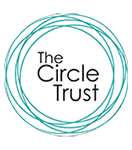Our Governance
The Circle Trust is a single legal entity. It was created by Members and is overseen by Trustees. Everyone in these roles commits to act within the Nolan seven principles of public life which are:
How Governance works in our Trust?
Members are the ‘guardians of governance” in our Trust. Their role is limited but significant: They appoint and can remove Trustees and the Trust auditors, ensuring the Trust is always working towards its charitable objectives.
The Trust Board is legally accountable for our Trust and all its schools.
The Board sets the Trust’s strategic aims and priorities and ensures these are met efficiently and effectively in line with its vision and values. It delegates responsibility for all day-to-day operations (including safeguarding, educational outcomes and resource management) across the Trust to the Chief Executive Officer and in individual schools to the Headteacher, as detailed in our Scheme of Delegation.
In order to engage more widely with stakeholders, leverage the professional expertise of the Trust executive team and eliminate duplication and in turn reduce workload, the Board has opted not to delegate governance to a local tier.
There are now two reserved positions on the Board for parent Trustees and the Resolution Circle for pupil suspensions and exclusions, complaints and certain personnel processes.
Channels are under construction for direct, two-way communication with key stakeholder groups (staff, pupils, parents and carers and local communities and civic actors) at school level via Headteacher Roundtables and across the Trust via our Stakeholder Circles. These will provide opportunity not only to hear stakeholder voice to inform strategy and decision making but also to build a relational approach to communicate the work of our Trust and its schools.










